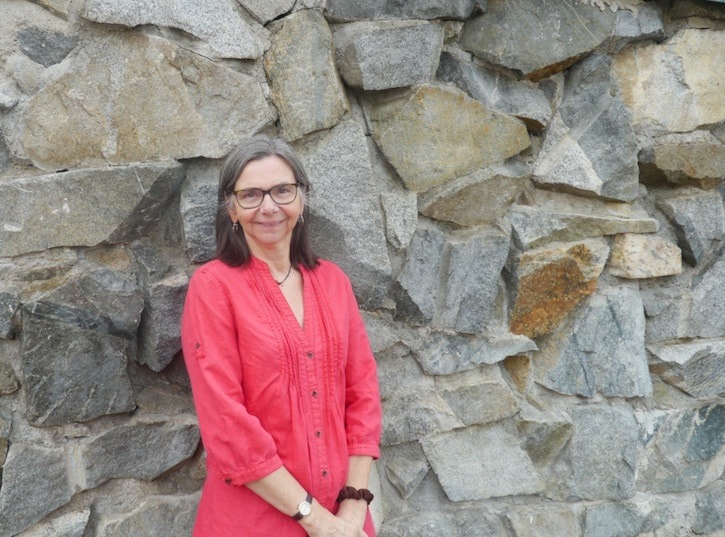In a remote village in northern Guatemala, a group of people is acting out the process of getting diabetes. One plays the mouth. Others are internal organs. The pancreas, after some food has entered the mouth, folds his arms and says, ‘No way, I am too tired, I cannot open the door and let insulin out today.’”
The other organs ask the pancreas, “How can we wake you up?”
“You have to be dramatic,” says Mary Ann Morris, a Nelson resident and Selkirk College nursing instructor who uses drama and other interactive techniques as part of training the group about the causes and management of diabetes. “They would sometimes stop the play and say ‘I don’t get it. What exactly is a pancreas anyway?’”
The village is Nuevo Horizonte, population about 400, created in 1998 after the Guatemalan civil war by guerrillas who had been living and fighting in the mountains for years. Rather than return to regular civilian life, they formed a cooperative village with the aim of creating a more just society.
Using drama is part of the down-to-earth approach Morris uses to work with the residents of Nuevo Horizonte, who have very limited education but are highly motivated to learn about diabetes.

A group of people with diabetes who call themselves “equipo azucar” or “team sugar” receive a certificate for attending the workshop on diabetes prevention and management. Photo submitted.
“It is one thing to be a health practitioner in the mountains during the war when someone gets shot and you see a bullet wound and see them hemorrhaging. There is a very clear cause and effect.”
But diabetes is much more abstract, and the need to understand it is critical.
“The International Diabetes Federation has recently indicated that diabetes in Central and South America is responsible for 44 per cent of deaths under the age of 60,” Morris says. “No one would have thought that. That is huge.”
She explains about 24 million people in Central and South America are dealing with diabetes, 46 per cent of whom don’t know it, and that is projected to grow by 66 per cent in the next 15 years.
Morris, who is fluent in Spanish, has been travelling back and forth between Canada and Guatemala since the 1980s. Annually for the past ten years she has visited rural areas with groups of third year Selkirk College nursing students, looking at the causes of poor health. The diabetes project is separate: lately she has been travelling to Nuevo Horizonte with certified diabetes educators from the Kootenays.
“My work down there has always been about health promotion,” Morris says, “looking at how to focus on health rather than illness, so that involves looking at the social and economic determinants of health and strengthening them. It is a focus on the collective, rather than the individual.”

Mary Ann Morris in Nuevo Horazonte with a group of Guatemalan youth studying diabetes. Photo submitted.
People with diabetes need to measure and control their blood sugar level (a function normally taken care of by a healthy pancreas) through diet and exercise, and in a minority of cases by taking medication. Uncontrolled blood sugars can lead to vision, kidney, heart, vascular, and nerve problems.
During her trips with nursing students, diabetes gradually rose to the surface in her awareness as one of the causes of a lot of undiagnosed health problems.
“Two years ago in Nuevo Horizonte we did a screening and found that out of 100 participants, 29 had diabetes and many were unaware of it. Once you have a diagnosis you can start thinking about how you are going to live with the disease.”
So Morris has introduced a train-the trainer model: local people train others about diabetes, with local health providers leading peer support groups.
“We teach them what a healthy diet looks like, because it is not a unique diet for diabetes, it is just a healthy diet. We teach them about exercise, about stress management. We teach them that it is the uncontrolled blood sugars that create the health problems, and that was a huge shift in thinking,” Morris says.
High school students are part of the process, and the training program has been introduced into the school curriculum. Morris recounts that in one of the education sessions about food and diabetes, one high school youth said, ‘I’ve got it. First they killed our families with bullets (during the civil war) and now they’re killing us with Coca Cola but really it is the same thing.’”
Morris says the causes of diabetes in places like Nuevo Horizonte have been researched and she cites a number of inter-related factors: low-cost low nutrient foods, colas that are cheaper than bottled water, and urbanization leading to less wholesome food grown on the land and less exercise.
Morris says Guatemala and Canada could learn from each other, because Canada is not doing well controlling diabetes either.
“Here we approach it as one person’s disease. Down there they approach it as a whole community.”
She is excited about her next trip.
“Now it is about sustaining that energy. It is about the long-term view, but if anyone can do it is the people of Nuevo Horizonte can. They understand sacrifice for your children’s children and they understand that no one is going to do it for them.”
